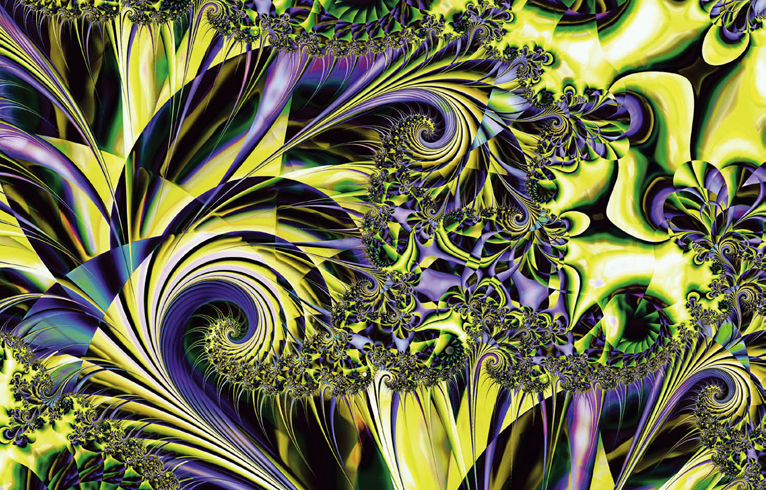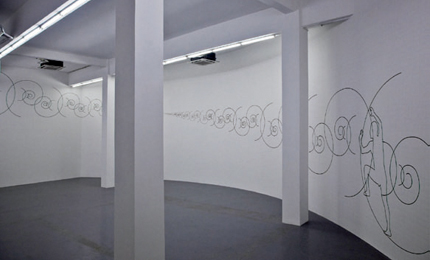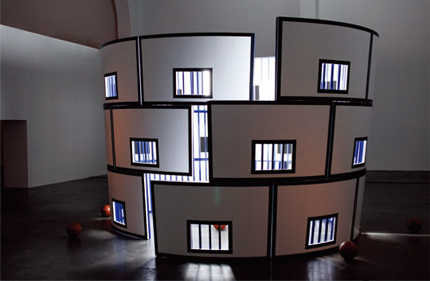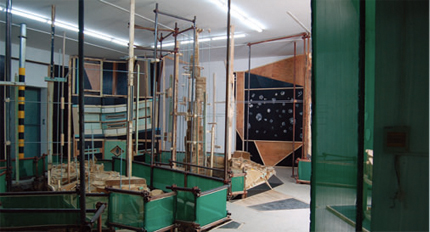“THEORY FEVER”: FROM PHENOMENA ONWARD
| May 9, 2012 | Post In LEAP 14

Ever since the ‘85 New Wave, discussions about theory have been part of the progress of contemporary art in China, and on multiple occasions theoretical debates have taken center stage. In the 1980s, translations of Sartre and the existentialist writers, of varying quality and accuracy, found their way into the country, as did a great number of texts on postmodernism later on; the decade also witnessed focused discussions on Abstraction. In the 1990s, Qiu Zhijie— author of Criticizing the Formalism of Formalist Critique—and members of the Post-Sense Sensibility movement launched attacks against art historian and Central Academy of Fine Arts professor Yi Ying and the institutional authority that he represented. Then came the 2000s, when a thriving market reduced art criticism to nothing more than “catalogue decorations.” So today, when all topics seem to have been exhausted, the great Weibo debates of 2011 signal to us that from theorists and artists to enthusiasts and amateurs, everyone has something to say.
The current ”theory fever” under examination is contained within the Chinese art scene. China has not exported any of its homegrown theorists, nor did it produce much of the philosophical and artistic theories to which we refer here. To be sure, this is all set against an inherently global backdrop, but the realities of China today and the various problems facing Chinese contemporary art in specific make this fever ripe for study as a special case worthy of examination in its own right.
While the various observers and participants of theoretical discussions within the Chinese contemporary art world tend to arrive at divergent conclusions, the relational thread between theory and art— defined by inexact boundaries and frequent fluctuations— has always been there. In our research for this article, we met those who view theory as an impulse emanating from the artist’s creative needs, and encountered others who prefer to see it as an operational imperative, such as when making art with theoretical underpinnings was a survival tactic used early on by Chinese artists. The stories we heard confirmed that theory played a part in artists’ resistance to and oppression by institutional lines of thinking. In recent years, the din of a lively art market has drowned out the serious discussions, yet the translation, introduction, reading, and application of European and American theory remain a normalized, long-term undertaking.
Of the people we interviewed, there are scholars in the classical mold who dedicate their days to studying, translating, and building disciplines; though removed from the art scene, their efforts provide a latent link between theory and practice. Within the academies, experiments injecting theory into the “creative state” continue to fumble in the dark, while practicing artists and theorists mostly prefer to keep their interaction with new knowledge and theory on a manageably personal level.
As for the state of this “theory fever,” the symptoms are undeniable. The reasons for its appearance are harder to pin down. It has to do with the multitude of online platforms, provocation from key individuals, and the confluences that mark the development of Chinese contemporary art in the last 30 years. A new conversation is taking shape.
A THEORETICAL IMPERATIVE
The theories and theorists discussed on Weibo, Internet message boards, and other such public forums are nothing new, especially not to those active in the Chinese art scene, where conversations at openings and private parties easily weave in ABRZ (Agamben, Badiou, Rancière, and Žižek). But on the Internet, the multitude of identities and personalities hidden behind Weibo handles are more obscure: some are serious; some are show-offs; some are onlookers; some seek universal transparency of opinion; and some privately criticize all they read, though never in writing. There are those who always rail against the trends, and even those who do not are reading away in silence. Beyond ABRZ, some may prefer Wittgenstein, and others may look all the way back to, say, Plato to get their fix.
In 2011, an account on Weibo, the Chinese version of Twitter, called “Theoretical Workshop’s Backdoor” sparked a tempest in the teapot that is the contemporary art world. It was later revealed that the man standing behind the “backdoor” was the philosopher Lu Xinghua, who teaches at Tongji University in Shanghai. Putting aside for a moment the insults traded by Lu’s supporters and detractors, and how a debate previously academic and social in nature devolved into mutual condemnations of character, the gigabytes of evidence all indicate that theory had once again entered the art world’s field of vision, even if in this instance theory was only being talked about, not analyzed or debated. The biggest change from the past was the stage upon which this spectacle unfolded— Weibo.

Weibo’s fragmented and immediate qualities make it a good social thermometer, yet it is precisely this nature that casts a shadow over the veracity and reliability of its portrayal of this “fever.” While the Internet is one big open forum, there is nothing that guarantees the participants will maintain an open mind. On the contrary, opposition and argument are but natural byproducts of online debate, which is most often naïve and most often leaves the last ones standing feeling lost and despondent, relegated to cleaning up the emotional ruins.
This is not the first time that a “theory fever” has been spurred by debate. In the 1990s, Qiu Zhijie engaged in a war of words against Yi Ying. This heated exchange largely took place between pages of Jiangsu Pictorial, although the disagreement originated at an earlier conference. Recalling the episode now, Qiu Zhijie says the debate was preceded “by slow and careful deliberation that gradually converged on the issue at hand.”
But in our current age, when distribution of information and authority no longer follow such a horizontal structure, the conditions that made the Qiu-Yi debate the intense and complex battle of intellect that it was no longer exist, nor are they even reproducible. The testing grounds for ideas have moved away from magazines like Jiangsu Pictorial to online communities such as Art-Ba-Ba and Weibo. During this transition, close-range conflicts with the system and with authority have become a legitimate way for the Chinese contemporary art world to self-reflect and criticize. What, exactly, is this new and effective model?
One aspect of this new paradigm is the use of theory and theorists to stimulate creativity, as seen at the newly established School of Intermedia Art at the China Academy of Art, Qiu Zhijie’s Total Art Studio, and even the classes that Yang Fudong teaches at the Experimental Image Studio. A better example, however, is Lu Xinghua, who long before he set out to entertain and provoke readers on Weibo, was already participating in art projects as a professor of philosophy. In 2010, alongside Gao Shiming— who knew Lu from their student days— Lu took part in the Ho Chi Min Trail project, which was presented by Gao at the Shanghai Biennale later that year. Then last year, at the invitation of Jin Feng and TOP Contemporary Art Center, Lu organized a seminar that eventually drew participation from the art collective MadeIn Company, a collaboration that culminated in the inaugural “Future Festival” in July 2011. The radical nature of this particular exhibition, and thus the attention and controversy it received, makes it a classic example for the study of the mixture of art and theory.
There was a range of speculation about the exhibition. Was it simply utilitarian? If so, to what extent? And: Who was using whom in this scenario? Was there a real theoretical basis for all the talk? Even Lu’s scholarship and credentials were called into question. But as Jin Feng explained it, he felt that artists needed to be challenged, and to learn from their responses to Lu’s multiple rounds of questioning, which demanded that the artist further explain himself and his actions. The real work begins after the artist returns to his studio.
The reality is that Chinese contemporary art is well aware of its anemic state. Artists need to find a way out of their current stagnation. Yet, to advocate for “theory before practice” necessarily invites skepticism because, even judged against the short span of the last 30 years, it is not a new idea. How is this current scheme any different from when Chinese art needed to borrow Western discourse to find its own audience and market? Moreover, the important issue of how much we should involve theory throughout this renewal process has become but a secondary concern.
When asked about Lu Xinghua, Qiu Zhijie says that regardless of the accuracy of Lu’s viewpoints or the depth of his understanding of theory, the Chinese contemporary art world owes a great debt to this man for what he has done. Gratitude seems an exaggeration in this context, but it is undeniable that Lu’s hard-driving questioning has pushed the issue of stagnation to the fore, and continues to draw blood from his targets. For the philosopher, he has found a new topic of inquiry in art. But for the artist, thrill-seeking through theory is not a long-term solution.
As intimate and embroiled as he is with the Chinese contemporary art world, critic, curator, gallerist and professor Pi Li sees the situation from a different point of view: “Why is there this theory fever, why this need for theory happening now? This is a matter of historical progression. Over the past 30 years, developments in contemporary art have resulted in the accumulation of a wealth of materials. We need to go through these and make a careful, historically-minded examination— this is the urgent issue of the day. Our culture here has arrived at the stage when it needs to reflect and begin to interpret its past. And we must preserve for ourselves this right, and prevent it from getting into the hands of the West or of the market.”
In Pi Li’s opinion, the way forward is to adopt a grassroots model of analysis. Instead of approaching practice from the point of metaphysics, he suggests that we treat each artist and art movement as unique cases, applying terminology and theoretical method along the way, not before. The burden of this work falls to critics to the art media alike.

A THEORETICAL STATE OF BEING
When we met the art critic and philosopher Boris Groys in Beijing, we couldn’t resist seizing the opportunity to ask for his thoughts on the state of theory and art: “Before you begin to make art, you have to know what art is. If you are practicing in a well-established tradition such as Chinese calligraphy, then maybe you do not need to ask that question. But today the situation in most art practices is different. Now you must have a theory about what it means to make art, or how to define yourself as an artist, before you start doing anything. What are your positions vis-à-vis society, market, or art institutions?
“The advice for artists not to have theoretical or philosophical concerns might have been good a couple hundreds years ago. But in our time, it’s not good advice, as all the traditions have gone away. As an artist, you come into a world where people from America, Europe, China, and India are all making different kinds of artworks, referring to various kinds of theories, from social to radical, from traditional to avant-garde. So you have to make a choice and find your own theoretical position.”
Although Groys’ response did not surprise, it clearly pointed to the fact that in our current age, the designation of “artist” no longer has that classical, exclusive certainty. In this scenario, we are all combatants in the same arena, and the roles of artist or theorist are interchangeable yet oppositional.
Gao Shiming, however, holds a less antagonistic view of the relationship between art and theory, describing them as two states of being that an artist or a theorist might be compelled to enter at any time. Gao expressed a vision that confirms the consensus reached by the artist-cum-theorists who also teach at the China Academy of Art: “I understand theory as more fluid, something akin to a creative impulse— theory as a state of being. We can’t let ourselves be misled by the distinctions between categories. For example, if we were to talk about art and politics, our discussion would have to borrow ideas from this theory or that experience, because the ideas that we have about one field do not necessarily apply to the other. But it is a fool’s errand to completely separate art and politics as two unconnected fields of thought. The role that a theorist plays here is to be a critic of the system. I’m not talking about the art school system or the biennial system, but the overall, invisible system that we all live in.”
Gao Shiming asserts that the terms artist and theorist merely differentiate their individual “impulses,” and “it is not that artists are in charge of creating while theorists are in charge of making conclusions and theorizing.” And, “Contemporary art is not just visual, it is also conceptual, relational, systemic, anti-establishment, political, and so forth; it is a practice that can be simultaneously described by a limitless number of words. It is very complex.” Pointing to the artist Wu Shanzhuan as an example, Gao emphasizes that when one views Wu’s works, it is not clear whether they exist in the “theoretical state of being or the creative state.” On the other hand, artists plainly categorized as having theoretical leanings include Qiu Zhijie, Wang Jianwei, and others, whose works often inspire in their viewers uncomfortable feelings of frustration and mistrust.
Reasoning can easily slide into sophistry, but the interplay between theory and creativity also carries the danger of being unmoored from ideas. The young art critic Bao Dong raises this issue. “At one point there were calls to stop making art pinned to theory, but this later became intentional obscurantism,” Bao says, “The artworks were presented without explanation or exposition, and the audience could not take away from the work any intelligent thoughts, only the image of a spectacle. To give proper respect to intelligence does not require theory, but it is easier to achieve through theory. In this respect, contemporary art is better than other fields, but there still remains a distrust and ignorance of intellect, a distaste for reflection and knowledge.”
While becoming aware of the pitfalls of mixing theory with art, we must also see that Lu Xinghua’s repeated conclusions have their blind spots. Yang Fudong has participated in Lu’s TOP seminars— which posit that the artwork possesses intent not actually related to art— but still claims to “create artworks as art.” From within the structure that Lu has set up— where exhibitions are more important than creativity— an artist such as Yang and his method are woefully underwhelming. Qiu Zhijie, however, would categorize Yang’s practice as “thoughtful” without being theoretical, admitting its validity and effectiveness.
At this point, what is the paradigm we are left with? Must the artist also take on the roles of curator and critic? Will an artist’s theoretical reading list have to show up in his artworks? If everyone needs to maintain a theoretical state of being, how will it be measured? Have making theoretical declarations become necessary to art? We would prefer to understand Groys’ idea of the artist’s “theoretical position” as awareness, not another prerequisite, because diversity and complexity of expressions is one of the most attractive qualities about art. Certainly what Lu Xinghua and Qiu Zhijie propose are only two of many possible paradigms, and not even the most mainstream.
Up close, there is a panic to either be radical or be labeled a reactionary, and one is left with the equally dangerous options of either being brainwashed or becoming enraged. But to shield oneself from both is to be even more submissive. Despite its inherent defects, Chinese contemporary art must continue to confront its current conditions head on, and continue to reflect and push forward, regardless if that means assigning a theoretical imperative now, or planning for a long-term theoretical state of being, or even treating theory as a way of life.

“FEVER”
When Gao Shiming curated the Shanghai Biennale in 2010, he remarked that although the participants— the artists behind the Ho Chi Min Trail project, the performance artist Zhang Huan, and the painter Liu Xiaodong— were all present at the same location, there was very little contact between them. “Everyone sets up a wall between himself and the others,” Gao states. “In Chinese contemporary art, artists working in the different approaches are separated; there is no dialogue and no competition. Add to this the intricacies of the distribution of capital, and the overall result is quite messy.” While Gao’s conclusion is not about issues of theory, for our purposes it is a useful observation.
When we focus our attention on the dialectical center of the theoretical debate in contemporary art, we see fully the degree to which the current “theory fever” has begun to sear eyebrows, but if we enlarge our scope, its severity lessens. For the older, established artists, the state of the conversation right now is unequal, leaving many at a disadvantage. The younger generation, meanwhile, are too far in over their heads for anybody take them seriously. Meanwhile, those who seek to study and learn on their own often fall short, and the few forums that have invited artists from the periphery of the art scene to participate have only had limited effect.
Even within the inner circle that we have studied here, obstacles to dialogue abound. The shapes and sizes of the walls vary; there are prejudices, self-interest, favors and preexisting relationships. From the exposés and accusations— preaching post-colonialism is to pander to the official status quo, or stepping into a business role amounts to relinquishing any scholarly credibility— we see that there are divisions and grudges that have lasted for all of the past 30 years and are still holding strong. The reality is far from the vision that Qiu Zhijie described, one where “through cooperation and partnerships, people gradually become sensitive to each others’ ideas, eventually reaching a tacit sense of understanding, but this does not always mean agreement.” It is certainly a fine ideal, one worth striving for.
Finally, to return to a practical issue, the market’s powerful influence has brought about the incorporation of previously rebellious, avant-garde ideas into mainstream theoretical discourse. This is a problem without a ready solution, because it is not just in China, but a question for our age; the popularity of certain theorists is not unrelated to this fact. The entire world must find a way to break from the status quo. Under these sorry external conditions, geographical divisions, arguments about French versus English and American applications of theory, and even the prejudice and estrangement that have resulted from the incompatible personalities of various artistic groups, Chinese contemporary art has successfully created more problems for itself.
Perhaps the appearance of “theory fever” sweeping through the art world carries with it the opportunity for action. Perhaps we can begin to clear away the prejudices, to let this fever take root, and to let it grow into something less like pathology, and more like passion.

